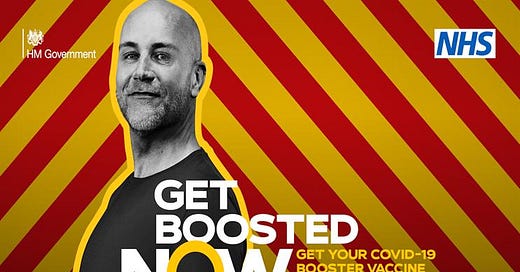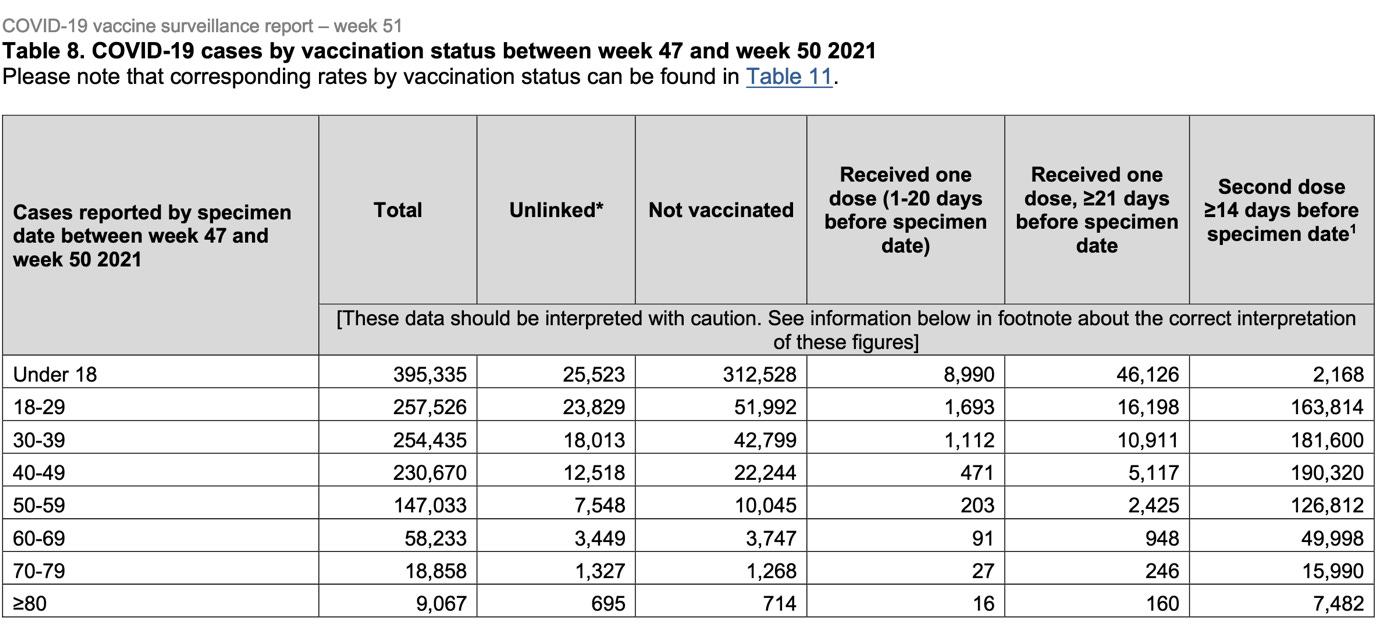
Propaganda: A definition
What is propaganda? It is communications that are wide in their reach, systematic in their messaging and conducted on the basis of either deliberate lies or a host of false assumptions that do not have the public good as their aim, but the interests of the powerful as their goal. Based on this definition, we are currently on the receiving end of a propaganda assault concerning the rollout of mass vaccinations and their role within what should be (but largely is not) a suite of public health measures. Instead, vaccinations have become a magic bullet and for that to be credible, it has required the mass dissemination of magical thinking that is becoming increasingly dangerous.
Snapshots in the Propaganda War
Exhibit A: The Daily Express: “Anti-vaxxers ‘causing loss of life’ by block booking vaccine centre under fake names.” No evidence was provided for this alarming story nor any sense of the numbers involved (one or two idiots or a mass campaign that would make this newsworthy?).
Exhibit B: The Guardian: “London hospital staff speak out: ‘We’re not here to judge, but please get your Covid vaccines.’” Here we learn that 80-90% of patients in the King’s hospital’s critical care beds are unvaccinated. I am not saying that the clinical staff are lying about this, but the reportage should have put that figure into a larger context of statistical evidence (which as we shall see shortly, calls this claim into question as a general truth).
Exhibit C:
The Archbishop of Canterbury, Justin Welby has suggested (on ITV News) that it is immoral not to get vaccinated. This is a claim that many on the left would agree with. They argue that getting vaccinated should not be a personal choice and they would line up with those who would create social segregation between the vaccinated and the unvaccinated and further, impose mandatory vaccinations on the population.
Exhibit D: In December, the UK Government passed legislation to impose mandatory vaccination on NHS staff in patient-facing roles. This will force many tens of thousands of NHS staff to choose between having the vaccination or their job. The Labour party supported the legislation (although former leader Jeremy Corbyn did not).
Exhibit E: Sajid Javid, the Health Secretary, attacked people who have chosen not to be vaccinated because “they take up hospital beds” that could be used for, presumably, morally responsible patients. You have to admire the brass neck. Out of 33 OECD countries, only three had fewer hospital beds per person than the UK and in terms of critical care beds per 100,000 of the population, the UK is behind Denmark, France, Italy, Portugal, Spain and Germany to name a few European countries.
What makes these exhibits in the Covid propaganda war is that the claims and the policies that are being made (or considered), are not supported by the evidence. The evidence I speak of is publically available but is rarely brought before the public by the mainstream media. Let us take a look at that evidence since it could just be that it provides the basis for a more reasoned discussion than we seem to be capable of these days.
The Evidence Base
The evidence comes from the UK Health and Security Agency (formerly Public Health England) which produces weekly reports on vaccine-related data. The following is from the “Covid-19 vaccine surveillance report, Week 51” which takes us up to 23 December 2021.
The report includes what is called “raw data” on the numbers of people infected and hospitalised, including whether they have had the vaccination or not. The report insists that this raw data, which has not been adjusted according to the proportion of people vaccinated against those unvaccinated, should not be “used to estimate vaccine effectiveness.” Even as raw data, this report raises questions about the veracity of those claims that it is the unvaccinated who are catching Covid and being hospitalised by it. And it is also possible to factor in some rough sense of proportionality thanks to data in the report elsewhere on vaccine take-up, split across age groups.
Against the claims made by the media, some health care professionals and politicians, even the report acknowledges that:
In the context of very high vaccine coverage in the population, even with a highly effective vaccine, it is expected that a large proportion of cases, hospitalisations and deaths would occur in vaccinated individuals, simply because a larger proportion of the population are vaccinated than unvaccinated and no vaccine is 100% effective. (p.34, emphasis added).
So let’s take a look at some tables from the UK Health Security Agency’s “COVID-19 vaccine surveillance report—Week 51.” Firstly, infection rates.
The rates seem to be spectacularly high for the vaccinated, a surprising finding given the report’s claim that “several studies have provided evidence that vaccines are effective at preventing infection. Uninfected individuals cannot transmit; therefore, the vaccines are also effective at preventing transmission.” (p.11). This is one of the main planks for policies such as vaccination passports, the idea that if you are vaccinated you are much less likely to get Covid-19 and it is one of the assumptions underpinning the moral clarity of people like the Archbishop of Canterbury because if you are much less likely to get infected, you cannot as the report, logically observes, transmit the virus.
Yet these arguments disintegrate on first contact with the evidence. Take the 18-29 age group. Between weeks 47-50, 51,992 unvaccinated people in that group caught the virus. How many of our supposedly more immune vaccinated population in this same age group caught the virus? There were 163,814 reported Covid-19 cases of those who had received a second dose of the vaccine. That is three times more than the reported cases of Covid-19 infections amongst the unvaccinated. Does the proportion of those vaccinated against unvaccinated in that age group help account for this? Hardly. According to page 21 of the report, slightly over 60% of this age group have had two doses of the vaccine. If the vaccine were merely a placebo, one would then expect the figure to be 20% higher (the difference between the 60/40 split in terms of vaccinated/unvaccinated in this age bracket). But clearly, 163,814 is not 20% higher than 51,992, but more than 200% higher. If it was a vaccine that was doing its job in terms of preventing infection, then you would expect it to be lower than the 51,992-figure given the 60/40 split.
It is hard to know what to make of these figures for 18–29-year-olds. It would seem on the face of it that the vaccine is counter-productive, perhaps either giving young people Covid or lowering their resistance to it in some way. Or, it could be as the report argues that: “People who are fully vaccinated and people who are unvaccinated may behave differently, particularly with regard to social interactions and therefore may have differing levels of exposure to COVID-19.” (p.34)
Now, note the may. This provides a handy-get out clause for the proponents of vaccine effectiveness vis-à-vis infections, but it cuts both ways, because it may not. Where is the evidence in any case? There does not appear to be any in the report. So let us apply some good sense. It would seem plausible that the unvaccinated older age groups might exercise more caution than the vaccinated – after all, the latter have been told again and again that having been vaccinated they are “protected.” But I suspect that amongst the young, who are a very low-risk group, the behavioural differences between the vaccinated and the unvaccinated are not so large and certainly not so large to explain that chasm between 51,992 and 163,814.
And the gaps do not get any smaller or less puzzling in other age brackets. Look at the 50-59 age group. They have a very high vaccine take up, in the mid-to-upper 80% for the 50-55 and 55-60 group. But still, even factoring in proportionality, the difference between 10,045 unvaccinated infected and 126, 812 double dosed, seems staggeringly large and not a great advert for vaccine effectiveness in terms of infection.
Now let us look at Covid-19 cases “presenting to emergency care.”
Now, here things start to look a bit better for the vaccine in terms of preventing hospitalisations. However, before we come to that, let us just knock on the head the lie that it is largely the unvaccinated who are taking up critical care beds. Totalling the figures for those who have been double-vaccinated across the age groups, we see that 4027 have resulted in at least an overnight admission between weeks 47-50. For the unvaccinated, the total figure for the same period is 3693.
But certainly, here we do seem to be seeing some vaccine effectiveness. It may not stop you from getting the infection, indeed it seems to positively encourage you to get the infection, but there is, to variable degrees, less likelihood of you being hospitalised if you have had the vaccine. For the 18-29 age group, the figures are 272 (unvaccinated) to 166 (vaccinated). If the vaccine was a placebo with no effect at all, you would expect (given the 60/40 split in the proportion vaccinated) for the vaccinated to be 20% lower, hence 54.4 less than 272 (=217). But it is lower than that, closer to 40% lower, so given the 60/40 split which accounts for 20% of the difference, the vaccine has an effectiveness of around 20%. While the vaccine demonstrates some effectiveness, the evidence does not support an unanswerable case for rolling out the vaccine to relatively low-risk age groups.
Things look better for the vaccine within older age groups because as we all know, the disease has a strong age profile in terms of severity of the illness and mortality. In the 50-59 age group the figures are 619 unvaccinated and 687 vaccinated. Given that this age group has taken up the vaccine in high numbers (mid-to-upper 80%) the proportionality argument looks better. But is it so much better that vaccine segregation and vaccine mandates should become public policy and the common currency for attacking the unvaccinated in public discourse? I think not and not by a long way.
Finally, let us look at deaths.
The number of people who died in the weeks between 47-50 and who were vaccinated with the second dose equals 2,050.
The link to age is very strong of course, with only 1 under 18 counting for that number and 1,055 over 80s.
The number of people who died in the same period who were unvaccinated equals: 782.
Now, what are we make of these two figures in terms of proportionality? I am going to leave that with you the reader because I do not want to make claims on such a serious matter that I am not sure about. What I would point to though is that according to the report, by December 19th 2021, 62.6% of the population had had two doses. If the vaccine had any significant effect in relation to mortality (and it did seem to have some effectiveness in terms of hospitalisation) shouldn’t the 2050 figure be lower than it is? That figure is more than 2.5 times higher than the unvaccinated. I am not a statistician and I am not a medical professional, and I would love someone to explain to me why on the face of it, we should not be worried by these figures concerning vaccine effectiveness with regard to mortality.
Conclusions
Let me be clear, I am not against Covid-19 vaccination per se and am not against people being offered the vaccine. For older age groups, say 70+ there would seem to be some merit in it. I am saying that a mass vaccine roll out including children (currently under consideration) is not supported by the available evidence, still less, regimes of mass stigmatisation or imposition. The vaccine has though become the UK government’s magic bullet, a way of not applying a whole suite of public health measures. And if you make the vaccine a magic bullet then you have to stigmatise and threaten the unvaccinated, otherwise, how else to explain high infection rates and still quite high death rates? And much of the left are falling in line, their traditional critiques of corporate power dissipating like the morning mist because Big Pharma and the State has science and public health on their side on this one (apparently).
Finally, were these still experimental vaccines completely harmless then maybe a case for a strong messaging campaign with a moral dimension around voluntary vaccination would be sound. But it is clear that these vaccines are also dangerous, with a range of serious adverse effects including mortality. This would be the subject of another article, but I think it is clear, that at any other time, such vaccines would have been pulled from the market given the significant number of bad outcomes which are evident, even with the authorities not particularly interested in researching these adverse side effects and the media equally uninterested in reporting them. Since I am not interested in propaganda but reasoned thinking, then I repeat my call out: if my interpretation of the data above is completely unsupportable, wildly wrong and unintentionally irresponsible, then please let me know how and why. Who knows, you may even persuade me to get vaccinated?








